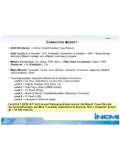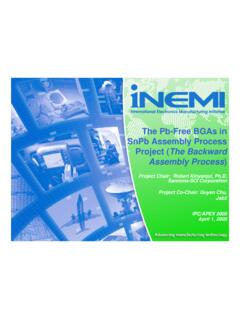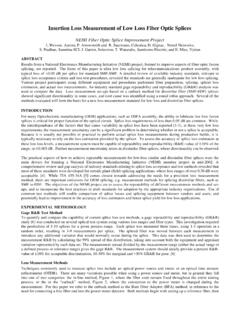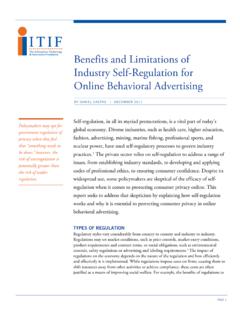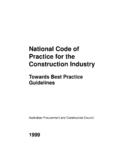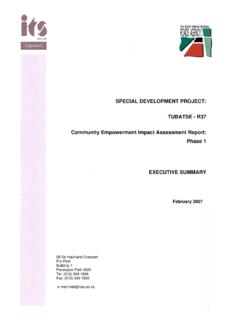Transcription of In Search of the Perfect Bill of Materials (BoM) - …
1 In Search of the Perfect bill of Materials (BoM) Connect with and Strengthen Your Supply Chain NEMI a white paper by the NEMI Perfect BoM TeamMarch 2002 White paper: The Perfect BoM Page 2 of 25 Table of Contents Executive Summary ..3 Problem Statement ..4 Supporting Data ..8 Cost to the Industry ..10 Solution Statement ..12 Recommendations ..17 Glossary of Terms ..18 References ..19 Appendices ..20 A: Participating Companies B: Recommended Framework C: Sample PDX File White paper: The Perfect BoM Page 3 of 25 Executive Summary OEMs turn to outsourcing to gain manufacturing efficiencies, but the efficiencies (and accompanying cost savings) they hope to achieve can be elusive.
2 Some of the greatest obstacles are problems associated with bills of Materials (BoMs). Supply chain interactions are seriously hindered by the lack of a standard data format for BoMs, unacceptably high error rates and a lack of technology and tools to validate BoMs. The problems are pervasive, and the consequences, far-reaching. The cycles required to clarify or correct data can directly affect time-to-market and time-to-volume. In 2001, the National Electronics Manufacturing Initiative (NEMI) organized a team of industry leaders (see Appendix A) to investigate and define the issues surrounding BoMs. This team is recommending a solution that calls for industry to adopt a common format with standardized contents the Perfect BoM" to ensure that data is consistent, correct and complete, and that errors are resolved before exchanges are made among business partners.
3 The team has identified the Product Data eXchange (PDX) specifications, developed by NEMI s Virtual Factory Information Interchange Project, as the foundation for the Perfect BoM. These specifications provide an industry-standard approach to exchanging BoM and change order information and will be used to define data structure. In addition, the team has developed a recommended list of data to define standard BoM content. Implementation of the Perfect BoM will require a higher level of industry awareness and a commitment to standard solutions. The NEMI team s action plan calls for an education effort to raise awareness of problems and proposed solutions in an effort to encourage rapid acceptance and implementation.
4 This paper discusses the problems and challenges that exist with today s BoMs, and outlines NEMI s recommended solutions for creating and implementing the Perfect BoM. White paper: The Perfect BoM Page 4 of 25 Problem Statement The bill of Materials (BoM) is, in its simplest form, a list of parts or components required to build a product. It provides the manufacturer s part number (MPN) and the quantity needed of each component. At its most complex, the BoM is a multi-level document that provides build data for multiple sub-assemblies (products within products) and includes for each item part number, approved manufacturers list (AML), mechanical characteristics and a whole range of component descriptors.
5 It may also include attached reference files, such as part specifications, CAD files and schematics. Originally used internally within a company, the BoM served as a means of tracking product changes and maintaining an accurate list of components needed to build products. As manufacturing has become increasingly distributed, the BoM has taken on even greater importance, serving as the primary reference file for product data. It is used to transfer product information from OEM to EMS provider and from the EMS to its vendors and suppliers. As outsourcing expands the number of companies involved in the manufacturing process, the need for accuracy is more critical than ever. At the same time, the transfer of manufacturing data across multiple companies magnifies problems and increases challenges.
6 As the primary conduit for data transfer among manufacturing partners, the BoM is central to the product life cycle from the very beginning. Figure 1 illustrates the flow of information from design to manufacturing. As indicated, a diverse set of information systems feed into the BoM, each providing different pieces of the information required to manufacture the final product. Typically, this wide variety of design, PDM and ERP tools output BoMs in different formats and at varying levels of completeness. File type and structure vary by company and, sometimes, even within a company, particularly if several groups have been merged into a single organization. This lack of standard format leads to redundant data processing.
7 EMS providers use parsers to neutralize data , convert it to a neutral format, such as a standardized text or XML file, that can be used by the EMS provider s tools. Parsers extract key data from customer data files and build a standard data format. Today, EMS providers must White paper: The Perfect BoM Page 5 of 25 develop parsers and scripts for each different format received. One EMS provider reports that it maintains an internal organization of about 80 people whose function is to interpret customer data and translate it into their own production system. Figure 1: This diagram represents the flow of information between OEM and EMS provider, from design through manufacturing.
8 Data Errors / BoM Defects The most significant problem plaguing BoMs is errors. EMS providers report that the data received from their OEM customers is often incomplete, inconsistent and/or outright incorrect. One EMS provider told the NEMI Perfect BoM team that seven out of 10 customers consistently need BoM corrections, and three in 10 components have bad or missing data. Several EMS providers said that error rates of 80% are not uncommon. PDMS chematic Capture Layout PDM Mechanical Design BoM CreationValidationERPShop Floor SystemsItem Master CAD Library item master flowdesign to manufacturing flowComponent Selection EMSOEMW hite paper: The Perfect BoM Page 6 of 25 EMS providers are spending a great deal of time and resources correcting deficiencies in the BoMs they receive.
9 Errors must be communicated back to the OEM for resolution, and valuable cycle time is lost. BoM errors typically fall within three categories: completeness, consistency and correctness. Completeness. Incomplete data is the most common BoM defect. Critical pieces of information, such as quantity, part description, reference designation and approved manufacturers list, are often omitted. Missing AMLs reportedly cause the majority of problems. Consistency. Information in the BoM sometimes conflicts with information provided in engineering drawings and design files. For example, quantities may not match there may be 10 locations for a particular component indicated on a board, but only a quantity of nine components specified in the BoM.
10 Another consistency problem is format. The format of the BoM, even though it is from the same customer, can change from one transmission to the next, making it difficult to match and confirm data. Even language can vary from BoM to BoM. Correctness. Incorrect data is a serious problem. Common errors include invalid manufacturer or supplier information, obsolete data and incorrect part numbers ( , the MPN given does not match the description of the part, or the MPN is not recognized by the manufacturer/supplier). Again, AMLs seem to be the predominant problem. Additional errors can result from receipt of information in hard copy format, which requires manual entry of date, an error-prone and time-consuming task.
